It is no coincidence that 22 January is the Hungarian Culture Day, as Ferenc Kölcsey clarified the manuscript of his most influential poem 199 years ago on this day. The first statue writer of Himnusz [the Hungarian Anthem] in Budapest was inaugurated in 1939 on the occasion of the centenary of his death in Batthyány Square. However, the original of the work of art - which had a very sad fate - was first erected not in the Hungarian capital, but in Nagykároly in Szatmár [today Satu Mare] County.
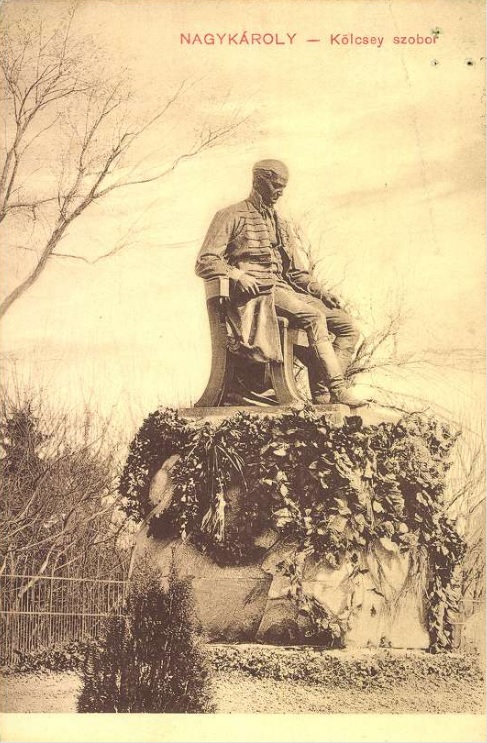
The original of the statue in Budapest, the statue of Kölcsey in Nagykároly, on a contemporary postcard
On April 1897, the sculptor Ede Kallós, commissioned by Count István Károlyi made the original Kölcsey statue, which was unveiled in Nagykároly, not far from the poet's hometown. The statue erected in the garden of Károlyi Castle depicted Kölcsey standing thoughtfully on top of an unworked, large block of stone.
His dress reflected the Hungarian style of the 1830s, and he held a book in his hand. On the pedestal was the poet's last name on the front: "KÖLCSEY", and on the back was the first line of the Himnusz. However, after Trianon, significant changes took place in the life of the city of Nagykároly, and the statue was severely damaged several times by Romanians. First in 1933 and then in 1934, when its head was sawn and taken away and replaced with green branches.
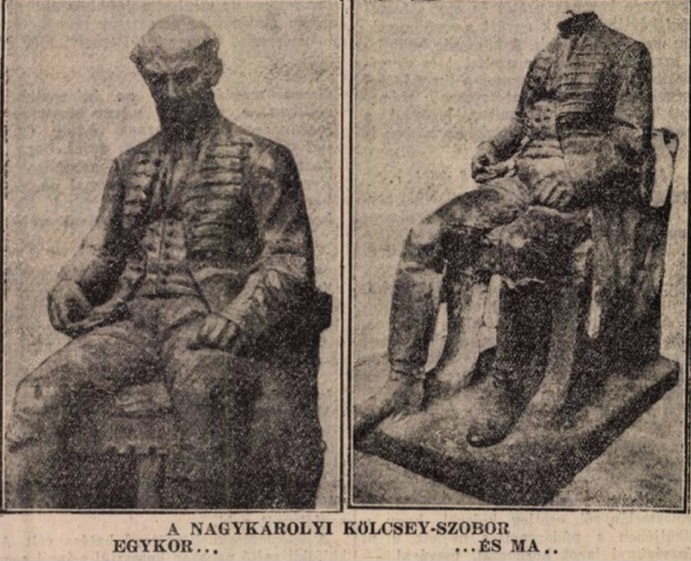
The humiliated statue of Kölcsey in Nagykároly in the 8 September 1934 issue of Függetlenség
The event was reported by the newspaper Brassói Lapok on 1 September 1934. The paper described how vandalizing the carefully planned truncation was:
"Their steel saw was first greased so that it would not make a sound, and they also had time to transport the huge piece of bronze unobtrusively."
On the morning after the outrage, people arriving in the square were greeted by a staggering sight: the beheaded Kölcsey statue. It is also clear from the contemporary newspapers that this was not the first such case, as the Kossuth statue in Nagykároly was subjected to similar damage, and the Hungarians living there looked with fear and fright at when Kölcsey would be also "evicted" - wrote the Keleti Ujság on 3 June 1933.
Ede Kallós spoke in 1934 about the destruction of his work:
“In the perspective of 37 years, I can see with my spiritual eyes the ornate unveiling of the Kölcsey statue in Nagykároly, where the representatives of the Kölcsey family and the Vécsey and Károlyi families were present. Miklós Bartha (Member of Parliament) gave a keynote speech at the unveiling of the statue. Then the veil fell and the bronze figure of the great poet sat there, his head bowed, one hand on his knee, the other holding a book ... Then a crowd of tens of thousands sang, "God bless the Hungarian!"
The sculptor was quoted by the newspaper Függetlenség on 8 September 1934. The mutilated bronze body of the poet's statue was eventually tipped down, taken to pieces and smelted down.
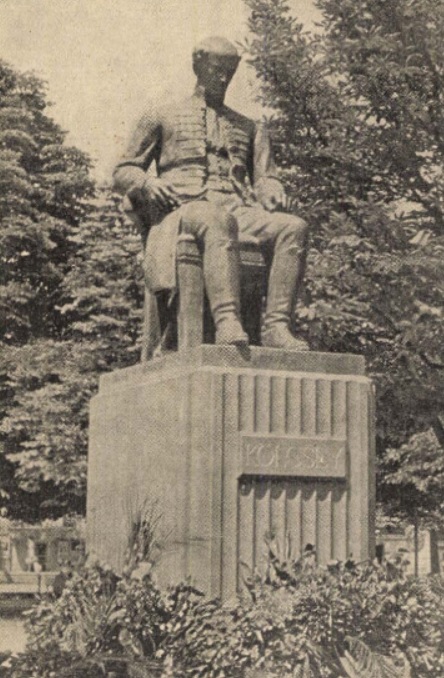
The Kölcsey statue inaugurated in Budapest in 1939 in the 2 July 1939 issue of Uj Idők, photographed by Jenő Dulovits
However, the statue destroyed in Transylvania was reborn in Budapest five years later. Ede Kallós made a bronze copy of the work based on his original plaster samples, which was erected in the Hungarian capital in 1939, on the occasion of the centenary of Kölcsey's death.
 Képes Vasárnap, 1940. december 15..jpg)
In the original place of the sculpture, in the middle of Batthyány Square, facing the Parliament in 1940, after the wreathing on the occasion of the Kölcsey Memorial Days (Source: Képes Vasárnap, 15 December 1940, photographed by Béla Szász)
The statue was placed in Batthyány Square, on a pedestal as high as the original, in the area of the entrance of today's M2 metro, facing the Danube and the Parliament. However, the statue of the writer of the Himnusz could not retain its prominent position after World War II: due to subway construction, it was first surrounded by buildings and then it was housed in the warehouse of the Kiscelli Museum in the 1960s. In 1974, without its previous pedestal, it returned to the northern edge of Batthyány Square, where he still stands, next to the building of the Hungarian Charity Service of the Order of Malta.
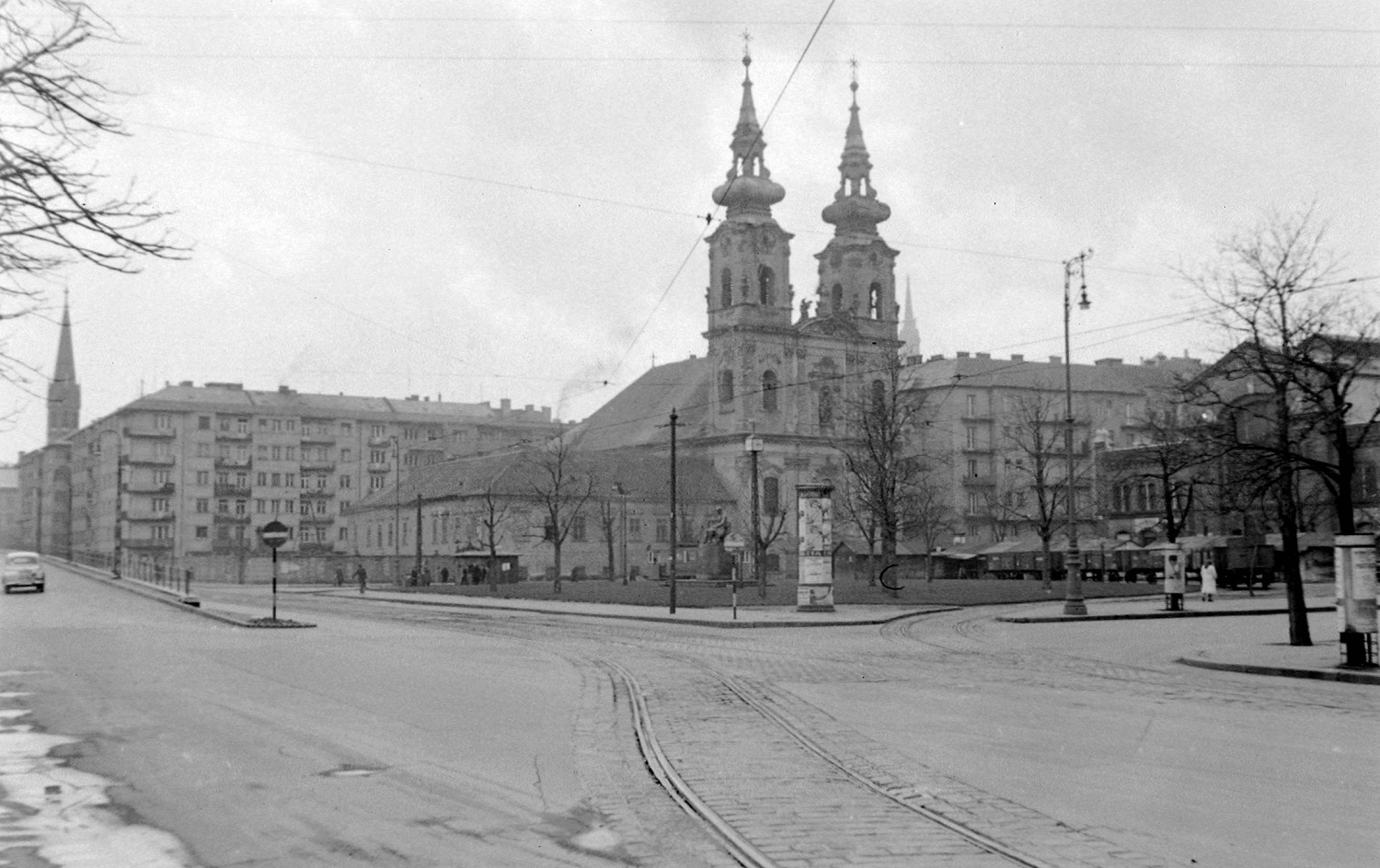 Batthyány Square in the early 1950s: the statue of Kölcsey can still be seen in the middle, to the left of the advertising column (Photo: Fortepan / No.: 4309)
Batthyány Square in the early 1950s: the statue of Kölcsey can still be seen in the middle, to the left of the advertising column (Photo: Fortepan / No.: 4309)
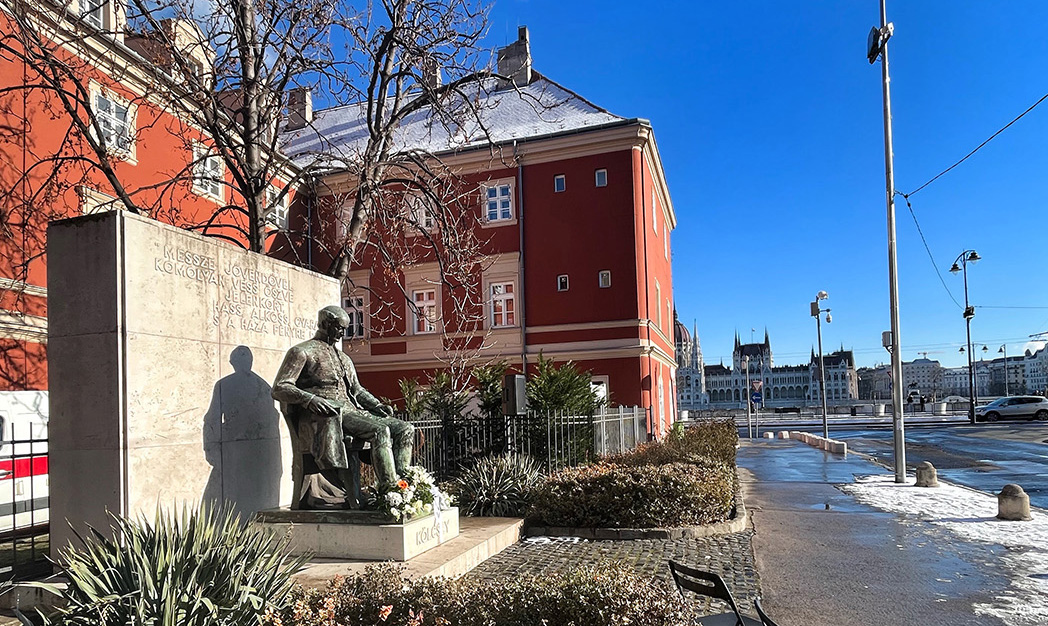
At its current location, on the edge of Batthyány Square, it does not prevail as it once did in the middle of the square (Photo: Júlia Kozics / pestbuda.hu )
However, its current form does not prevail in the same way as the original Kölcsey statue, which used to look at us from the several metre high pedestal and looked at us in the middle of the park. He was given a pedestal of only 20 centimetres - on front of which the inscription “Kölcsey” can be seen, as well as the original - and behind it was a marble-covered retaining wall on which we can read the lines of the poem Huszt. As the statue kept his head slightly down, standing on the original pedestal, it seemed as if the poet was looking at us from above. With the new pedestal, however, it gives the impression that it is just staring in front of itself
sadly.
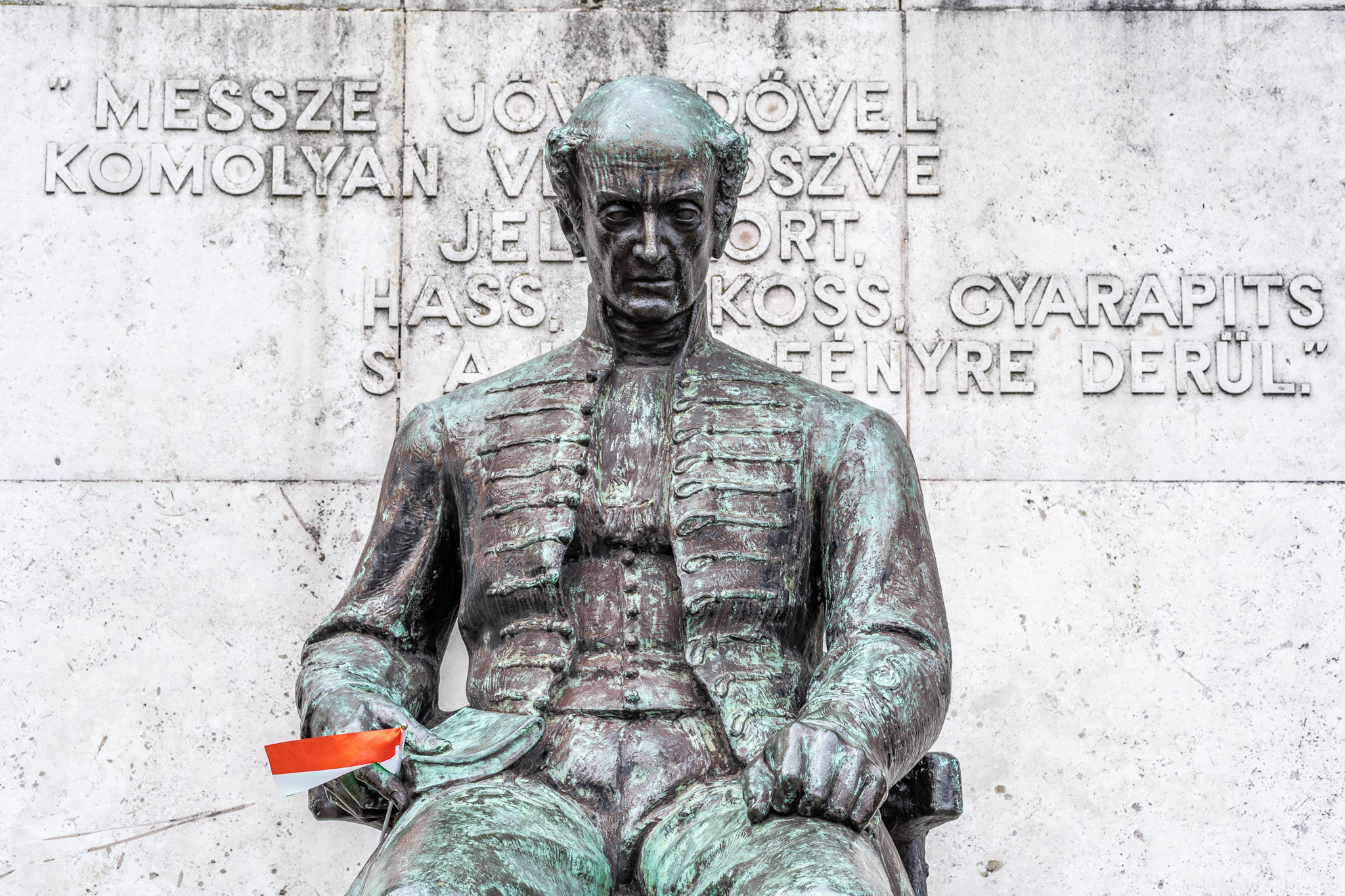
The Kölcsey statue today (Photo: Balázs Both / pestbuda.hu)
Although the first statue of Ferenc Kölcsey in Budapest, erected in a public square, has been pushed to the edge of Batthyány Square in a somewhat unworthy way, deprived of its former splendour, the work still stands today, defying age and time, like Hungarian culture itself.
Cover photo: Statue of Ferenc Kölcsey in Batthyány Square (Photo: Júlia Kozics / pestbuda.hu)

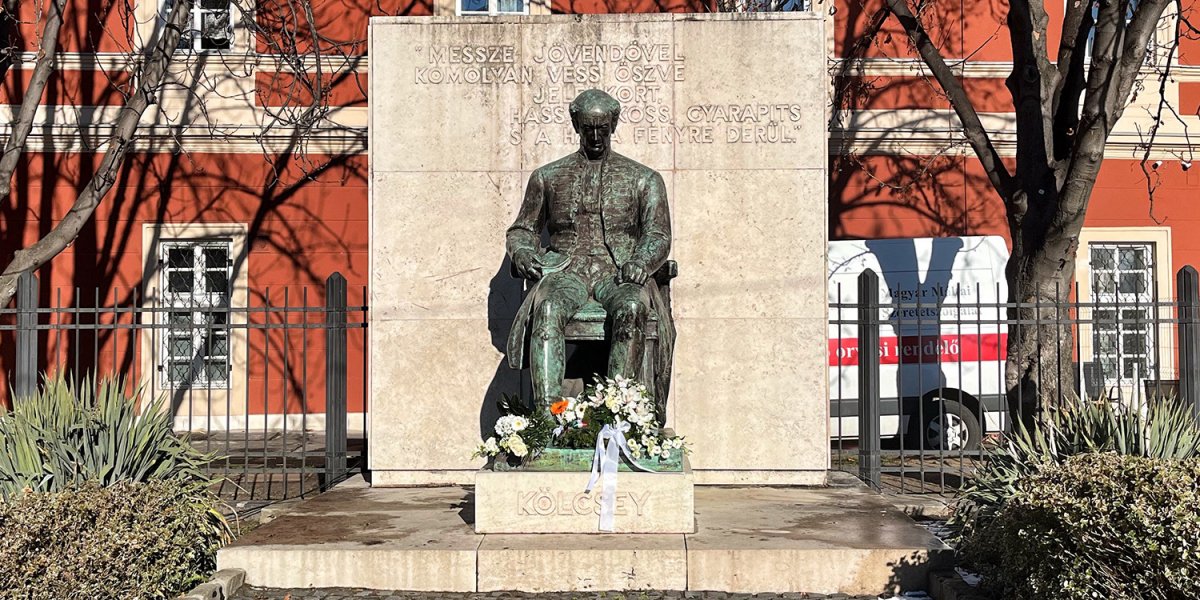
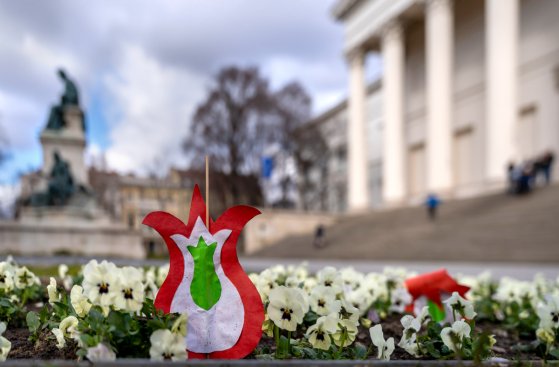


































Hozzászólások
Log in or register to comment!
Login Registration